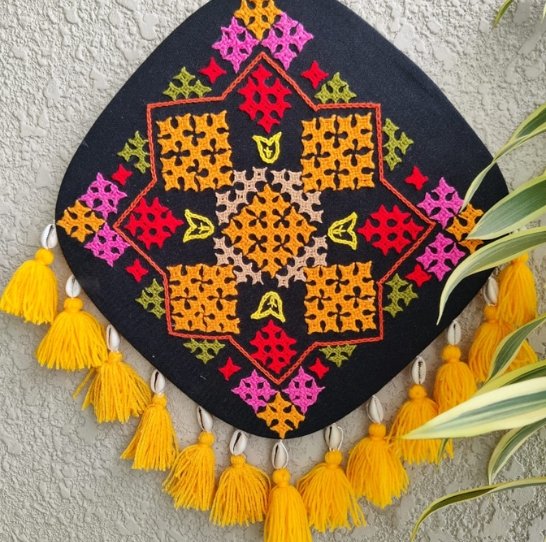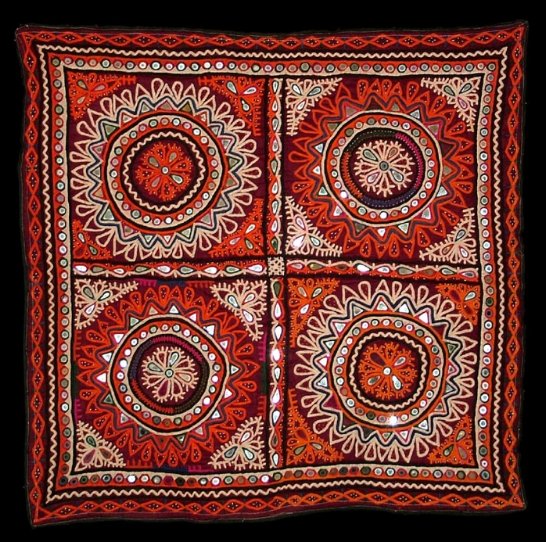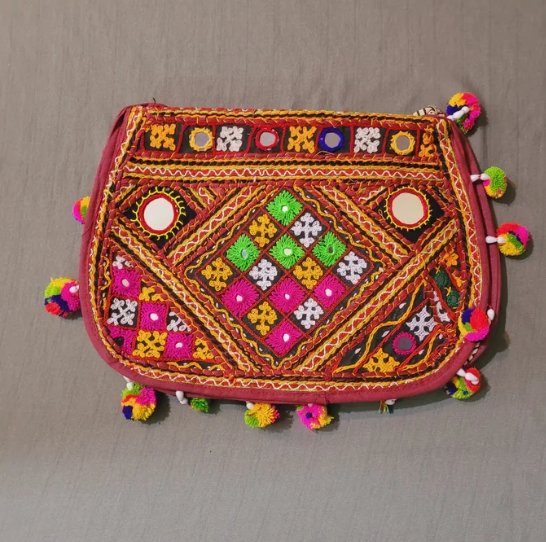
Kutch embroidery
Kutch embroidery is a vibrant and intricate folk art from the Kachchh region of Gujarat, India. It originates from this historic trade route region and is closely associated with the Rabaris, a nomadic tribe. Known for its rich patterns, vibrant colours and unique stitches, Kutch embroidery reflects the cultural identity and traditions of the communities that practise it.
- Cotton or silk thread on cotton fabric is used for embroidery, with some styles also using silk or satin-like materials.
- Common stitches include the square chain, the double buttonhole, the darning stitch, the running stitch, the satin stitch and the straight stitch, which often form geometric patterns.
- Mirrors, beads, sequins, batik fabrics and appliqués are often used for embellishment.
- Colours such as red, black, green, yellow, white and orange are frequently used.
- Traditionally made for personal use or dowry, embroidery has gained commercial appeal through tourism.
- The embroidery process often begins with the printing of motifs using wooden blocks or plastic pinhole plates.


- Products range from traditional to modern items, such as:
- Bags: Kothries, Thellis
- Wall hangings: Chaklas, Sankyias, Torans, Tarpudios, Pachhitpatis, Bhitiya
- Clothing: Odhanis, blouses, chania choli, ghagharas, kediyas
- Household items: Quilted mattresses, quilts, pillows, food storage covers and temple hangings.
- Non-governmental organisations (NGOs) and organisations such as SEWA, Shrujan, Kala Raksha and KMVS support artisans by promoting and preserving this traditional craft.